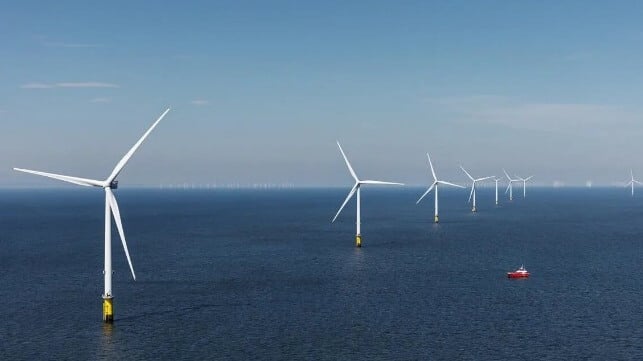Ørsted Discontinues Planned UK Wind Farm Citing Costs and Interest Rates

Danish renewable energy giant Ørsted has decided to discontinue efforts on the fourth phase of a major UK offshore wind energy project, which comes as a major blow to the UK’s renewable energy ambitions. The company is citing increased costs and risks despite the UK’s decision in 2024 to increase its support for the projects and the new government’s strong commitment to wind energy.
Ørsted has decided to discontinue the UK’s Hornsea 4 project in its current form, attributing the move to a combination of increased supply chain costs, higher interest rates, and increased execution risk. These factors, the company determined, have deteriorated the expected value creation from the project. It asserts that it, however, remains fully committed to the UK market.
Located approximately 40 miles off the UK coast and with a capacity to generate 2.4 GW, Hornsea 4 was the company’s fourth gigawatt-scale project in the Hornsea zone. Both Hornsea 1 and Hornsea 2, with a combined capacity of 2.5 GW, are operational, while Hornsea 3, with a 2.9 GW capacity, is currently under construction.
Ørsted was awarded the Contract for Difference (CfD) for Hornsea 4 in September last year and had planned to reach a final investment decision later this year for the wind farm that would have powered 2.6 million UK households. The CfD was at a strike price of £58.87 ($77.40) per megawatt hour (MWh), a fixed price at which the company would sell the electricity generated for the first 15 years.
However, changing dynamics in the offshore industry, the company said, forced it to abandon the project. Ørsted highlights that the new developments have increased the execution risk and deteriorated the value creation of the project, meaning it was not viable to continue with its implementation in the current form.
Taking the decision to stop further spending on Hornsea 4 and terminating the project’s supply chain contracts is resulting in material negative impacts on the company’s books. The company will incur costs of $533.4 million to $685.7 million in 2025 to shelve the project. The EBITDA impact is expected to be $475 million to $533.4 million, which includes a write-down of the offshore transmission assets and a provision for contract cancellation fees. The impacts on its books also include a write-down of between $76 million and $152.3 million in capitalized construction costs.
“Our capital allocation is based on a strict and value-focused approach, and after careful consideration, we’ve decided to discontinue the development of the Hornsea 4 project in its current form,” said Rasmus Errboe, Ørsted Group President and CEO.
Errboe, who only took over the leadership of the company in January following the ouster of Mads Nipper, added that adverse macroeconomic developments, continued supply chain challenges, and increased execution, market, and operational risks have eroded value creation from the project.
Despite putting the brakes on Hornsea 4, Ørsted says that if industry fundamentals change in the future, it might reconsider the development. While discontinuing the project is a big blow for Ørsted, the company is still reporting a solid operational performance and reaching more than 10 GW of offshore capacity during the first quarter of this year. Ørsted saw its operating profit (EBITDA) increase by 18 percent to $1.3 billion compared to $1.1 billion in the same period last year.
Despite the challenges engulfing the offshore industry, the company maintained its full-year guidance of between $3.8 billion and $4.2 billion, excluding earnings from new partnership agreements and impacts from cancellation fees. This year, the firm is also committing between $7.6 billion and $8.2 billion in capex.
